Website indexing tools are specialized software applications that enhance a website’s visibility and ranking in search engine results.
These tools streamline the process of getting web pages crawled, indexed, and ranked by search engines like Google and Bing.
By optimizing the indexing process, they play a crucial role in improving a website’s online presence and search engine optimization (SEO) efforts.
What are website indexing tools?
Website indexing tools are specialized software or services designed to help websites get indexed by search engines like Google.
When a website is indexed, its pages are added to the search engine’s database, making them eligible to appear in search results.
However, the indexing process isn’t always immediate or guaranteed, which is where these tools come into play.
Indexing tools automate and streamline the process, ensuring that search engines recognize and list your website’s content quickly and accurately.
They can also identify any issues preventing pages from being indexed, such as technical errors or improper SEO practices.
These tools often provide additional features like reporting, tracking the indexation status of your pages, and offering insights to optimize your website for better search visibility.
For web administrators and SEO professionals, using an indexing tool can save time and improve a site’s chances of ranking higher on Google.
How do website indexing tools work?
Website indexing tools work by facilitating the process of submitting URLs to search engines and monitoring their indexation status.
They typically operate through the following steps:
- URL submission: The tool submits new or updated web pages to search engine crawlers.
- Crawl analysis: It examines how search engine bots crawl the website’s structure.
- Index monitoring: The tool tracks which pages have been successfully indexed by search engines.
- Issue identification: It detects potential problems that may hinder proper indexing.
- Reporting: The tool provides insights and recommendations for improving indexation.
Why is website indexing important for SEO?
Website indexing is crucial for SEO because it directly impacts a site’s visibility in search engine results pages (SERPs). Indexing is essential for several reasons:
- Discoverability: Indexed pages can be found by search engines and displayed in search results.
- Ranking potential: Only indexed pages have the opportunity to rank for relevant keywords.
- Fresh content recognition: Proper indexing ensures that new or updated content is quickly recognized by search engines.
- Crawl budget optimization: Efficient indexing helps search engines allocate their crawl resources more effectively.
- Improved user experience: Indexed pages are more likely to be found by users searching for relevant information.
What are the benefits of using website indexing tools?
Using website indexing tools offers numerous advantages for webmasters and SEO professionals:
- Faster indexation: Tools can expedite the process of getting new pages indexed by search engines.
- Improved visibility: Properly indexed pages have a better chance of appearing in search results.
- Issue detection: Tools can identify and help resolve indexing problems that may be hindering SEO efforts.
- Time-saving: Automated processes reduce the manual work required for submission and monitoring.
- Data-driven insights: Many tools provide analytics and reports to guide optimization strategies.
Whether you’re managing new content or focusing on backlinks, the right tool can significantly streamline indexation, helping your site rank better in search results.
Below, we explore four top indexing tools, each offering unique features to help you improve your site’s indexation and overall search rankings.
1. Backlink Indexing Tool
Backlink Indexing Tool is a specialized SEO service designed to enhance the effectiveness of backlink strategies by accelerating the indexing process of backlinks in search engines, primarily Google.
This tool focuses exclusively on ensuring that created or acquired backlinks are recognized and valued by search engines, improving search rankings.
What makes the Backlink Indexing Tool stand out?
Backlink Indexing Tool stands out due to its unique features and approach to backlink indexing. Key differentiators include:
- No Google Search Console requirement: Users can submit any link for indexing without needing access to Google Search Console.
- Automatic credit refunds: Credits are refunded for unindexed links, ensuring users only pay for successful indexations.
- Secure indexing methods: The tool employs safe indexing technology to avoid link spam or Google penalties.
- High indexing rate: Backlink Indexing Tool claims to offer superior indexing rates compared to competing services.
- RESTful API: Customers can submit links, check indexing status, and download reports programmatically.
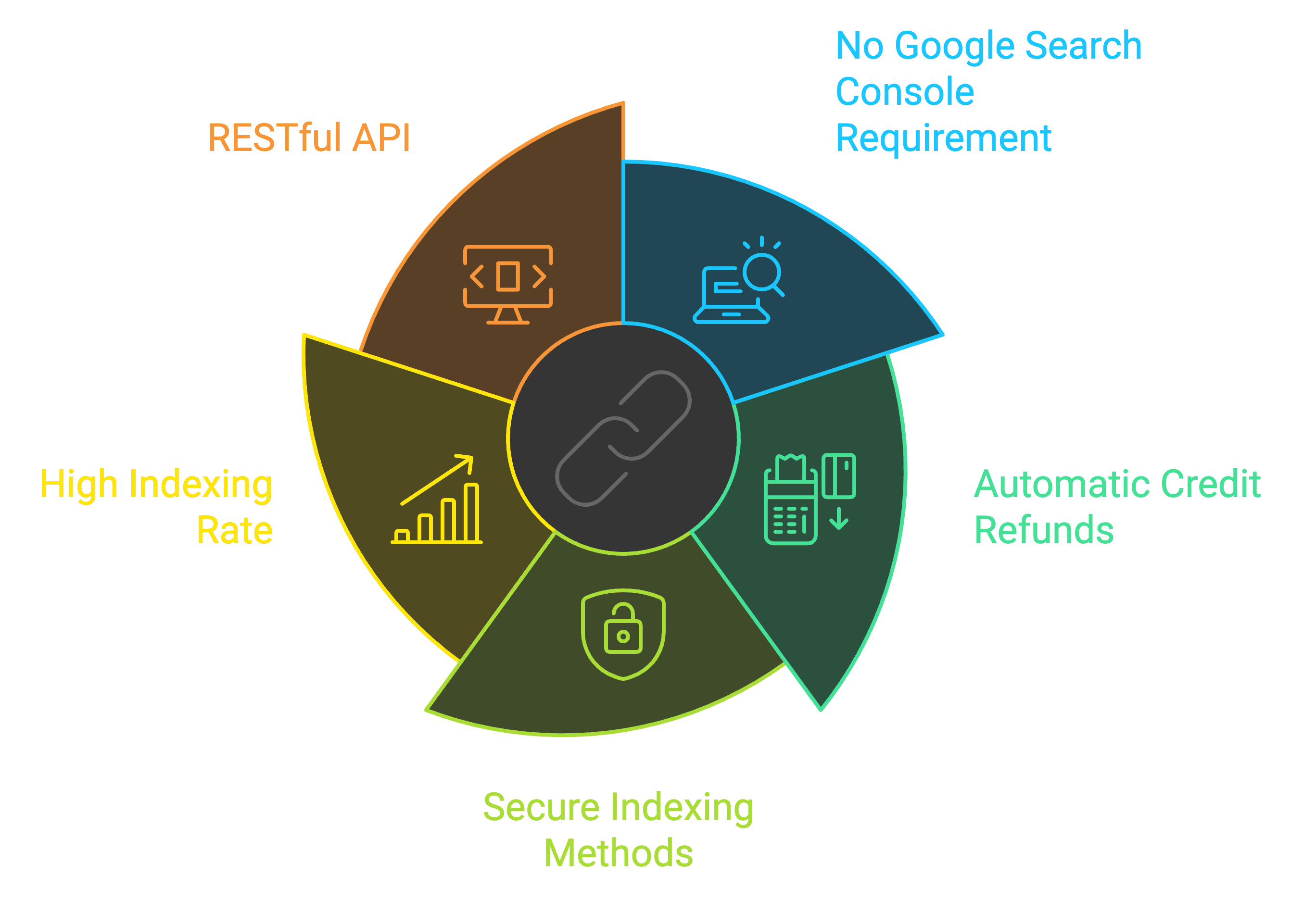
How does the Backlink Indexing Tool’s pricing structure work?
Backlink Indexing Tool’s pricing structure operates on a pay-as-you-go model using a credit-based system.
This approach offers flexibility in usage and payment without subscription requirements. The pricing structure is as follows:
- 100 Credits: $30 (one-time payment)
- 500 Credits: $135 (10% discount)
- 2,000 Credits: $510 (15% discount)
Each credit corresponds to one link indexed by Google. This model allows users to purchase credits as needed, scaling their usage based on project requirements.
The automatic credit refund feature ensures that users only pay for successfully indexed links, providing additional value and cost-effectiveness.
What are the pros and cons of using the Backlink Indexing Tool?
Backlink Indexing Tool is known for its high-speed indexing, which helps users get their backlinks recognized by search engines quickly.
Its auto-refund feature ensures that users only pay for successfully indexed links, making it a cost-effective solution.
The tool doesn’t require access to Google Search Console, simplifying the process for users managing multiple domains.
However, while the tool boasts a high success rate, some variability in results has been reported, especially in cases of more complex or niche websites.
Users managing larger projects might also find that costs accumulate quickly due to its credit-based pricing model.
2. Rapid URL Indexer
Rapid URL Indexer is a website indexing tool designed to quickly submit and index URLs in search engine databases. This tool aims to expedite the process of getting web pages recognized and ranked by search engines, particularly for new or updated content.
What distinguishes Rapid URL Indexer from other tools?
Rapid URL Indexer stands out in the market for its fast, efficient, and user-friendly indexing service, with a notable 91% indexing success rate.
Unlike many competing platforms, it does not require access to Google Search Console, which simplifies the submission process.
Additionally, it offers automatic refunds for any URLs that remain unindexed, ensuring that users only pay for successful results.
The availability of a RESTful API, a Chrome extension, and WordPress and Zapier integration makes the tool especially appealing for users seeking automated solutions for URL submissions.
Can you explain Rapid URL Indexer’s cost model?
Rapid URL Indexer uses a flexible credit-based system for its pricing, allowing users to purchase credits based on their needs.
The credit packages are priced as follows:
- 500 credits: $25
- 1,500 credits: $68
- 5,000 credits: $213
Each credit corresponds to one URL submission, and automatic refunds are provided for URLs that do not get indexed.
This pricing model is ideal for businesses of various sizes, offering affordable options for both small-scale and large-scale indexing needs.
What are the advantages and drawbacks of Rapid URL Indexer?
Rapid URL Indexer integrates well with multiple platforms, including WordPress and Zapier, which enhances ease of use and makes it highly accessible for different types of users.
Its high average indexing rate of 91% shows that it delivers reliable performance, especially for those managing large volumes of URLs.
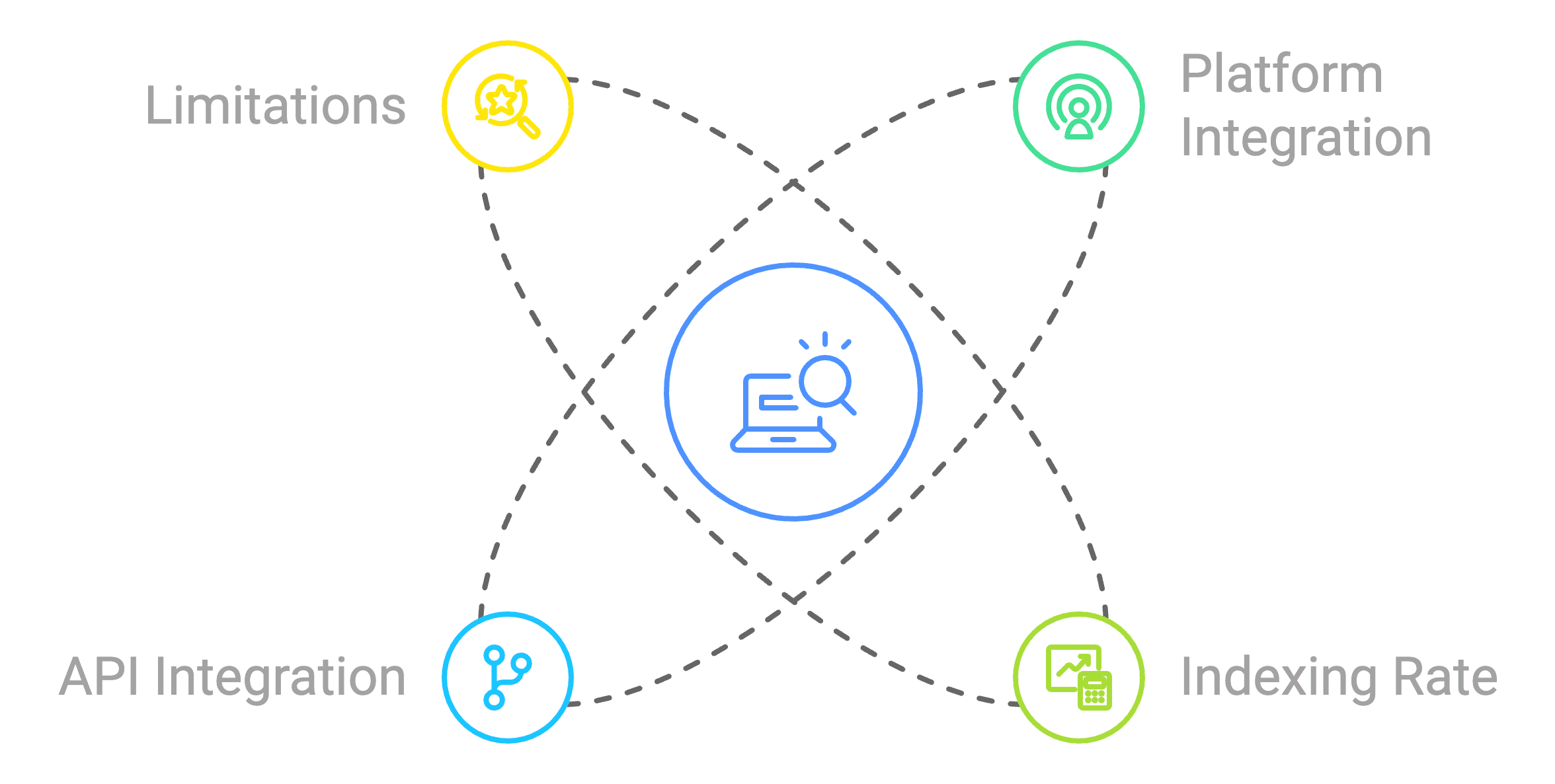
The availability of API integration adds flexibility for more advanced workflows.
However, despite its strengths, the tool does not guarantee indexing for every submitted URL, which could be a drawback for users with critical SEO needs.
Additionally, while it offers strong functionality, those looking for more customizable or niche solutions may find it limited.
3. GIGA Indexer
GIGA Indexer is a powerful website indexing tool designed to handle large-scale indexing tasks efficiently. This tool is particularly suited for websites with numerous pages or for SEO professionals managing multiple sites simultaneously.
How does GIGA Indexer differentiate itself in the market?
GIGA Indexer sets itself apart by offering a robust solution designed specifically for large-scale websites.
The platform boasts an 80% indexing rate within 72 hours, with the added feature of drip-feeding URL submissions over a period of up to 30 days.
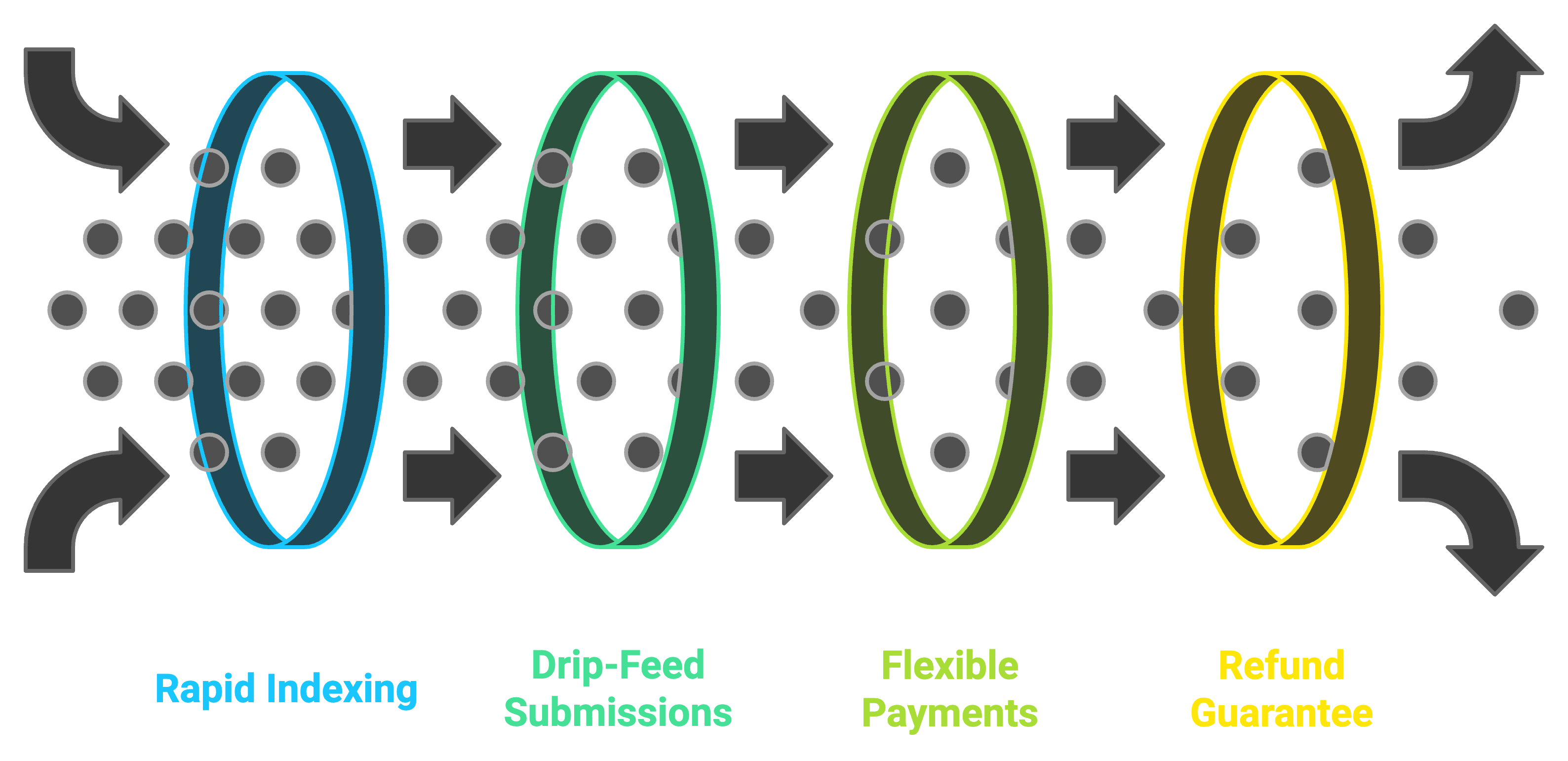
GIGA Indexer has flexible payment methods, accepting PayPal, Stripe, and cryptocurrency.
Additionally, it guarantees refunds for unindexed links, providing a safety net for users investing in high-volume indexing.
What pricing options are available for GIGA Indexer?
GIGA Indexer offers a tiered pricing structure based on the number of credits required, catering to both small businesses and larger organizations.
The options are as follows:
- Basic Plan: 60 credits for $29
- Premium Plan: 260 credits for $99
- Business Plan: 2,000 credits for $499
This flexible pricing ensures that users can select a package tailored to their specific indexing needs, whether they require a small number of submissions or are handling large-scale projects.
What are the pros and cons of using the GIGA Indexer?
GIGA Indexer is a powerful tool designed for large-scale websites, offering fast results which makes it highly effective for businesses with substantial backlink strategies.
The option for drip-feeding links over time is another valuable feature for those looking to maintain steady SEO growth.
Furthermore, its flexibility in payment options, including cryptocurrency, adds convenience.
On the downside, the pricing plan is more suited for smaller operations or those on a budget.
And while the tool offers high scalability, there’s a notable lack of public case studies or in-depth performance data to validate its claims.
4. Indexceptional
Indexceptional is a fast and secure URL indexing tool designed to improve search engine visibility. It offers flexible, credit-based pricing and automated processes, making it ideal for both small and large-scale submissions.
With a focus on compliance, it ensures efficient indexing without risking search engine penalties.
What unique aspects set Indexceptional apart?
Indexceptional stands out due to its emphasis on security and adherence to search engine guidelines, minimizing the risk of penalties.
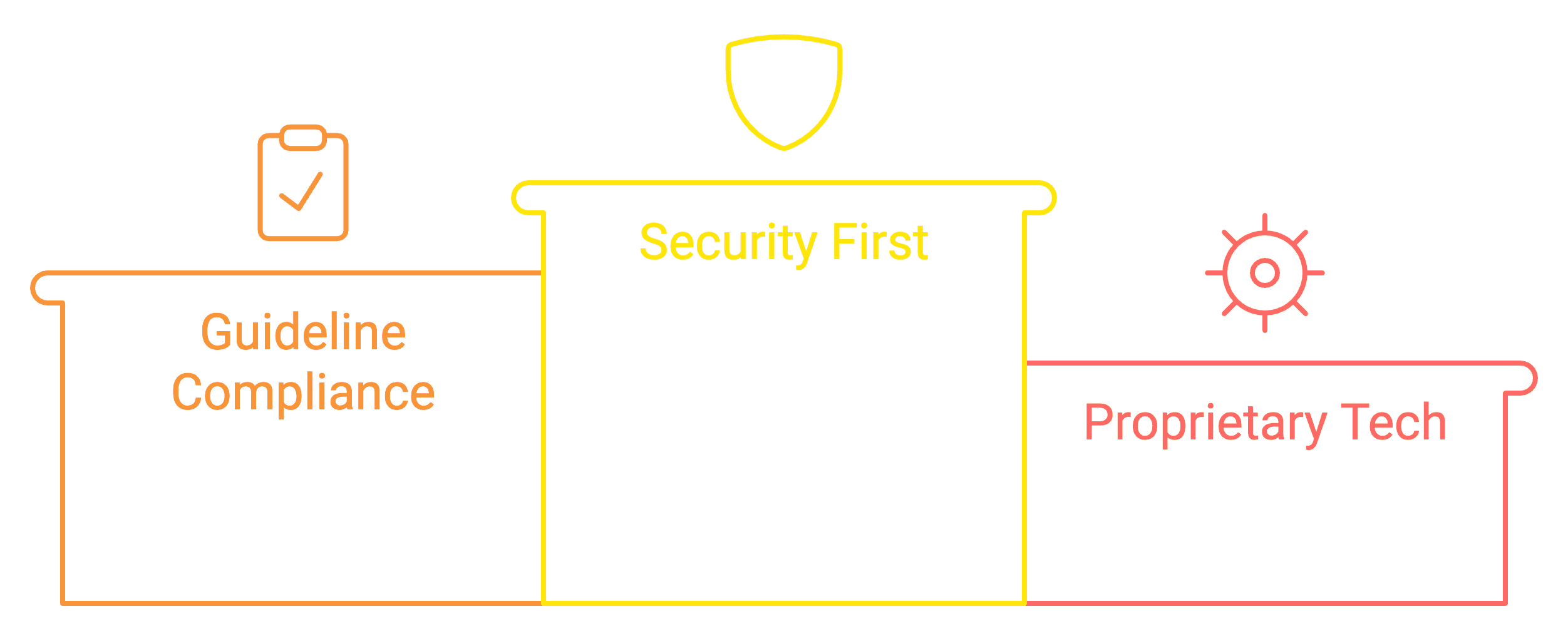
Its proprietary technology ensures fast, efficient indexing across multiple search engines while maintaining a high level of security.
Indexceptional is particularly well-suited for users seeking a reliable, scalable indexing solution that prioritizes safety.
How is Indexceptional’s pricing structured?
Indexceptional offers a credit-based pricing model, with multiple packages designed to meet various indexing needs:
- Starter Pack: 60 credits for $29
- Premium Pack: 260 credits for $99
- Agency Pack: 600 credits for $199
- Guru Pack: 2,000 credits for $499
This tiered structure provides flexibility for different user requirements, whether handling small-scale indexing projects or high-volume submissions for larger clients.
What are the strengths and limitations of Indexceptional?
Indexceptional’s key strength lies in its focus on secure, fast indexing that adheres to search engine guidelines, which is crucial for SEO professionals who prioritize long-term results without risking penalties.
Its proprietary technology and credit-based system make it scalable for both small businesses and large-scale projects.
However, while the tool boasts strong indexing performance, potential users may find the lack of transparent pricing details to be a challenge.
There are limited case studies or detailed reviews available, which makes it difficult to confidently evaluate its effectiveness compared to other options on the market.
What Are Effective Strategies to Overcome Website Indexing Challenges?
Website indexing presents several obstacles that can hinder the visibility and performance of online content.
To overcome common indexing obstacles, implement the following strategies:
- Improve site structure: Create a clear, logical hierarchy that search engines can easily crawl. Organize content into categories and subcategories, ensuring a coherent URL structure.
- Optimize robots.txt: Review and update your robots.txt file to avoid blocking important pages from indexing. Ensure it only restricts access to sensitive or duplicate content areas.
- Create and submit sitemaps: Develop comprehensive XML sitemaps and submit them to search engines. This facilitates crawling and indexing by providing a roadmap of your site’s content.
- Enhance page load speed: Optimize website performance to reduce load times. Compress images, minify CSS and JavaScript, and leverage browser caching to improve overall site speed.
- Fix broken links: Regularly audit your site for broken links and either redirect or remove them.
- Implement proper canonicalization: Use canonical tags to indicate preferred versions of pages with similar content. This helps avoid duplicate content issues that can confuse search engines.
- Leverage internal linking: Create a robust internal linking structure to help search engines discover and understand relationships between pages. This also improves user navigation and distributes link equity.
- Address crawl errors: Regularly check search console reports for crawl errors and fix them promptly. This ensures smooth indexation and prevents potential ranking issues.
- Optimize content quality: Ensure your content is unique, valuable, and relevant. High-quality content is more likely to be indexed and ranked well by search engines.
- Use schema markup: Implement structured data to provide search engines with additional context about your content. This can improve indexation and increase the chances of rich snippet opportunities.
What are the risks of using aggressive indexing techniques?
Aggressive indexing techniques can significantly jeopardize website rankings and reputation.
These methods often trigger search engine penalties, leading to reduced visibility or complete de-indexing of a site.
Overuse of automated submission tools or excessive link building may be interpreted as spam, resulting in algorithmic or manual actions against the website.
Moreover, aggressive indexing can strain server resources, potentially impacting site performance and user experience.
To illustrate the risks associated with aggressive indexing, consider the following table:
| Risk | Consequence |
|---|---|
| Search engine penalties | Reduced visibility or de-indexing |
| Spam flags | Algorithmic or manual actions |
| Server strain | Degraded site performance |
| Poor user experience | Increased bounce rates |
| Loss of credibility | Decreased trust from users and search engines |
What are the latest trends in website indexing?
The latest trends in website indexing focus on automation, smarter algorithms, and improved search engine efficiency.
As search engines evolve, they prioritize high-quality, relevant content with greater precision.
AI and machine learning are playing a critical role, helping to predict and streamline what gets indexed.
These advancements signal a shift toward more intelligent and proactive indexing strategies.
How are AI and machine learning impacting website indexing?
These technologies enable search engines to better understand context, intent, and relevance, leading to more intelligent indexing decisions.
AI-powered tools can predict which pages are most likely to be valuable to users, prioritizing their indexation and improving search rankings more quickly.
Key impacts of AI and ML on indexing:
- Improved content relevance assessment
- Enhanced natural language understanding
- Predictive indexing prioritization
- More accurate semantic search capabilities
- Automated content quality evaluation
What future developments can we expect in website indexing tools?
Future developments in website indexing tools are likely to include advanced natural language processing for content evaluation, predictive analytics for indexing prioritization, and integration with voice search and conversational AI.
We can also expect to see automated schema markup generation and real-time indexing status monitoring and alerts.
These advancements will aim to provide more precise, efficient, and proactive indexing solutions, aligning closely with evolving search engine capabilities and user behaviors.
Anticipated future developments:
- Quantum computing-powered indexing algorithms
- Augmented reality content indexing capabilities
- Blockchain-based indexing for decentralized search
- Emotion and sentiment analysis for content prioritization
- Cross-platform indexing for omnichannel experiences
How does Backlink Indexing Tool’s API enhance indexing workflows?
Backlink Indexing Tool’s API transforms indexing workflows by automating the submission and tracking of backlinks.
It integrates smoothly with existing SEO platforms, enabling users to programmatically submit links, monitor indexing progress, and generate detailed reports.
This automation reduces manual work and boosts efficiency, especially in managing large-scale link-building efforts.
Table of key API features:
| Feature | Description |
|---|---|
| Bulk link submission | Submit multiple links at once |
| Real-time status checks | Instantly verify indexing progress |
| Automated reporting | Generate and retrieve reports programmatically |
| Secure authentication | Protect API access with robust security |
| Flexible data formats | Support for JSON and XML |
| Rate limiting | Ensure fair usage across all users |
How can SEO professionals integrate the API into their existing processes?
SEO professionals can integrate Backlink Indexing Tool’s API into their existing processes by incorporating automated link submission into their link building tools and setting up scheduled tasks for regular indexing status checks.
They can create custom dashboards that display real-time indexing data, develop automated reporting systems for client updates, and implement webhooks for instant notifications on indexing events.
Steps for API integration:
- Implement automated link submission in existing tools
- Set up scheduled indexing status checks
- Create custom real-time indexing dashboards
- Develop automated client reporting systems
- Configure webhooks for indexing event notifications
This integration allows for more efficient management of backlink portfolios and enables data-driven decision-making in SEO campaigns, ultimately leading to improved performance and better results for clients.
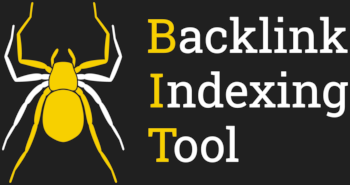
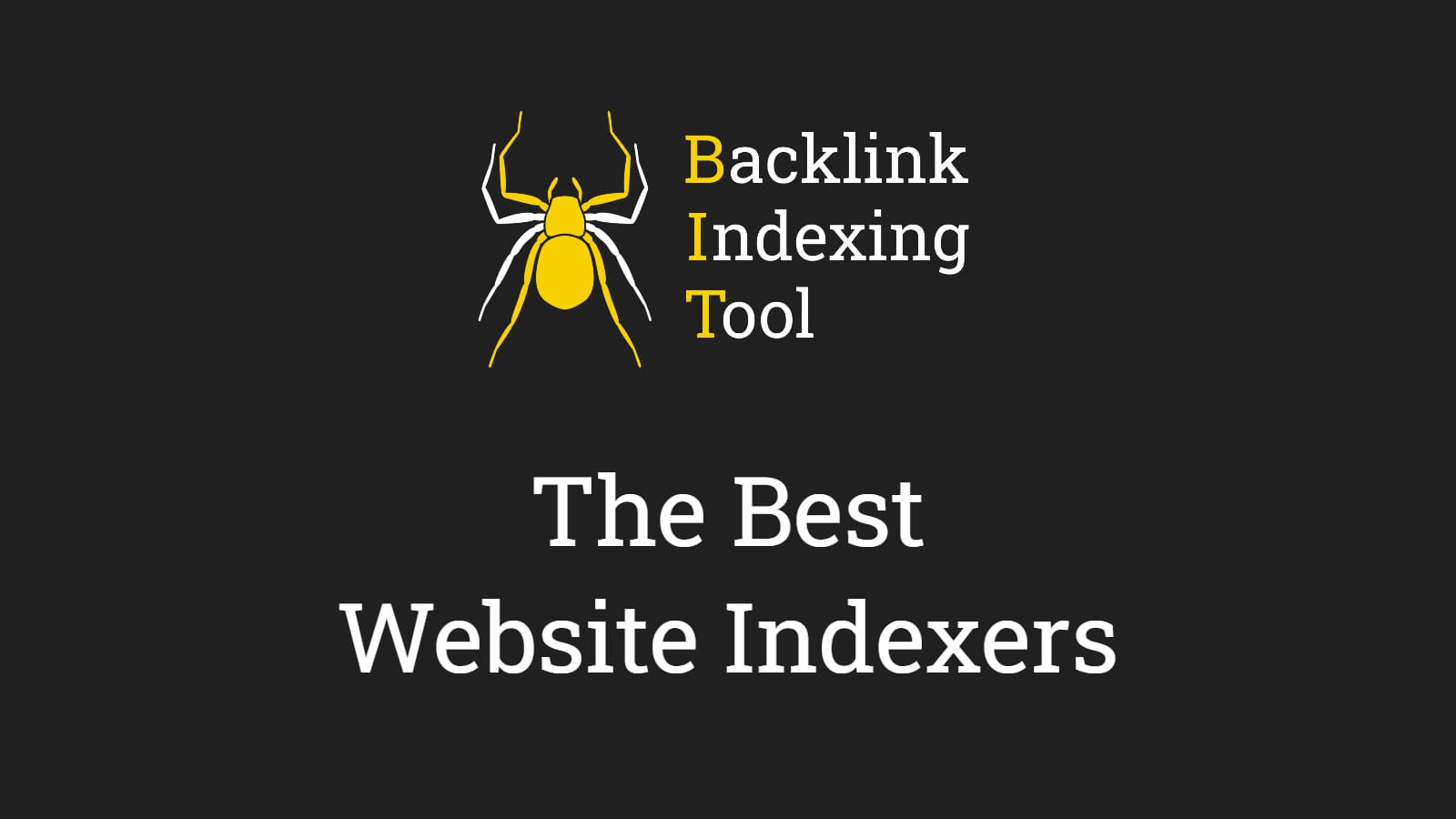
Leave a Reply